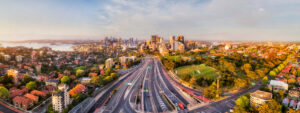The ASFA Retirement Standard December quarter 2019 figures indicate that couples aged around 65 need to spend $62,269 per year and singles $44,146, up 0.8 per cent for each on the previous quarter.
Over the year to the December quarter 2019 costs were up around 2.1 per cent for couples compared to the 1.8 per cent increase in the All Groups CPI. This equates at the comfortable level to couples needing to spend $1,292 more a year, and for singles the amount is $829.
The impact of the drought is even clearer in the figures for the increase in prices between the September quarter 2019 and the December quarter 2019. Over the three-month period there was a 6.8 per cent rise in fruit prices and a 2.9 per cent rise for beef and veal. Drought conditions impacted on the prices for a range of other fresh produce including grapes, melons, onions, potatoes, eggs, rice and prawns
The overall cost of food increased by 2.6 per cent over the past 12-months, largely as a result of the drought, but the prices of some foods increased even more:
- Price of beef up by 8.2 per cent and pork up by 7.9 per cent
- Price of vegetables up by 3.7 per cent
- Vegetarians also faced a 2.8 per cent increase in price of cereal products
- Price of milk up by 6.4 per cent and cheese by 5.7 per cent
- Bread prices up by 3.1 per cent and cake prices up by 4.5 per cent
- Poultry prices by 3.2 per cent
- Price of eggs up by 5.2 per cent
- Take away food prices up 2.4 per cent, affected by rising ingredients costs
ASFA’s Retirement Standard budgets assume retirees own their homes. Home ownership costs have also gone up:
- Home maintenance costs have increased by 2.7 per cent
- Water and sewerage charges increased by 2.9 per cent
- Property rates increased by 2.5 per cent
Rents were up by only 0.2 per cent on average over the year, but renters have much higher housing costs in retirement than homeowners.
The costs of automotive fuel were also up by 2.9 per cent over the year. ASFA’s Retirement Standard budgets assume car ownership.
There also was variation between State and Territory capitals in the rate of price increases over the year. Prices on average increased by only around 0.5 per cent over the year in Darwin, but by around 2.7 per cent in Hobart. Price increases in the other capitals were closer to the national average. The cost of living in Hobart has been particularly affected by a strong increase in the cost of domestic holidays due to increased tourist demand in Tasmania.
Details for the various updated budgets can be viewed on the ASFA website.
Costs and summary figures can be accessed via the ASFA website. Australians can find out more about superannuation on the independent Super Guru website.







